Intuition cards
Intuition Cards are a perfect tool which gives answers to all questions. In the subtle dimension of Nakshatra, the Moon radiates energetic vibrations manifesting as various qualities and potentials which affect actions, decisions and steps taken by a person, thus giving hints about solutions. When a person asks a question, the card he/she picks shows how the idea in mind or action to be taken will turn out. The Intuition Cards are irreplaceable advisory and revelation tool. They help to find a way in your own intentions and launch your intuitive perception. The Intuition Cards are a unique tool which communicates the message and answer for your further strategy while heading towards the intended target.
There are 27 cards in the deck where each card symbolizes one Nakshatra. There is also a book which gives for each Nakshatra an interpretation of the symbol, characterizes its nature, reveals the dominant deity and interprets its nature and actions. There is also a separate answer given by each card to the question asked before.
What are CARDS and where they come from?
It is believed that the cards came into existence long time ago (12th century) in the Ancient Egypt. When the enemy was getting closer to the pharaoh’s kingdom, Egyptians summoned all sages to decide how to protect the experience and knowledge gained throughout centuries. They brought to life their knowledge through paintings on the cards. At the time, there were 78 cards (called “Arcanes” but later on renamed “Tarot”) in the deck. Right around this time there was an Egyptian mage and scientist, named Hermes Trismegistus, who wrote “Book of Thoth”. His masterpiece was made of 78 planks with hieroglyphs on them, thus serving as the prototype of Tarot cards.
These cards were used for divination according to the main four natural powers: air, earth, fire and water. These natural powers are now replaced with four suits: spades, hearts, clubs and diamonds. In Tarot cards, spades are symbolized by swords, clubs – by wands, diamonds – by coins, but hearts – by cups. In India, playing cards were illustrated with a Shiva figurine with four hands holding a sword, cup, coin and wand.
18th century sources suggest that divination cards were used merely as a tool in order to point towards a specific oracle capable of giving answers to the questions asked. All these cards were powered not by an external energy, but by one’s inner consciousness and intuition.
The cards were used as roadmaps for conscious way of living. They showed a direction one should take in order to avoid life being just a fight with consequences but rather a path towards fulfilment and clear future.
Historian Ross Caldwell has studied the source of divination cards in Europe. Various sources (literature and historic documents from the Inquisition period) suggest that the tradition of professional card readers in Spain dates back to the 16th century, thus much earlier that the previously suggested 18th century. Therefore, it becomes clear that there still is not a uniform opinion in this regard and that cards were possibly used from the day one not only for entertainment and games, but also for telling the future.
Kabbalah states that one must not change the world around but rather change oneself and look for roots of everything within. The meaning and essence must be sought within oneself. Kabbalah, like astrology, is based on strict mathematical calculations which make it twofold: theoretical Kabbalah and applied Kabbalah. The science of Kabbalah has originated from the culture of Hebrew sages and is based also on the philosophy and laws of Judaism. The cards per se do not hold any future predictions but rather reveal the possible directions of future events taking into consideration real-life facts and one’s nature and characteristics.
There is, however, a different opinion suggesting that the origins of cards must be sought in France where they were crafted in the honour of mentally ill Charles IV. Their purpose was to entertain the man.
There is another source that suggests that Europeans mastered the game of cards much later than other nations. They were brought here from the East by a famous traveller, Marco Polo. History tells that in 1397 there were a growing number of ordinary folk who passed the time by engaging in different card games. These years enriched the history of cards with a deck of 80 cards depicting a horse, rabbit, antelope, pheasant, fish, crow, man and star. In Korea, this deck is still very much in use.
The history of divination cards suggests that cards were first introduced for this purpose in Europe. This was allegedly done by Gypsies who came here from the East and brought this tradition with them from India. Furthermore, the history suggests that Gypsies were telling fortunes with ordinary playing cards which served as a design prototype for Tarot cards. The true divination with cards in Europe was set in motion around 18-19th century when trust in divination with cards was grown much bigger and this type of divination had already claimed its place under the sun. This type of divination was truly rocketed by Frenchwomen Marie Anne Adelaide Lenormand. Due to the death of her father, Anne’s family was poor and thus she had to end her studies at a nunnery and work as a seamstress so that her family could make ends meet.
Shortly thereafter Anne moved to live in Paris where she learned how to divine with cards as well as to tell fortunes by using the Etteilla divination system. A while later she had a chance to open her own divination salon for upper class people. The salon became highly popular among the elite and the number of clients rapidly grew.
Anne’s divination traditions were continued by Erna Droesbeke who published a book titled ‘Fortune Telling with Lenormand’ (1987).
She improved cards with symbolic drawings: cross (symbolizes suffering), ring (symbolizes marriage), sun (symbolizes happiness and warmth) and other symbols. Therefore, thanks to this lady, divination with cards got a new Gypsy deck.
There are some who believe that cards were first introduced in China right around the 10th century; however, prototypes of these cards are much more similar to the modern game of dominoes. Moreover, these Chinese cards were used as an alternative to money (coins); therefore, historians more or less agree that cards were first introduced through Egyptian drawings and Book of Thoth.
Throughout the history of cards, the size of a deck and design of cards have changed. There is remarkable number of card types, including Tarot, Lenormand cards, angel cards, Gypsy cards and many more.
What is INTUITION?
Translated from Latin, ‘intuition’ means ‘attentive insight’. Intuition is the ability of our consciousness to assess the total picture of any situation, given that we are open and able to unlock logical and deliberate analysis of what is going on. Intuition is much more rapid that one’s logic because intuition does not enslave the mind on its slow and intelligent path forward, but instead it operates naturally, based on one’s life experiences.
Eric Berne, an American psychotherapist, put it like this, ‘Intuition is when we know something about something although we do not know where we learned this knowledge.’
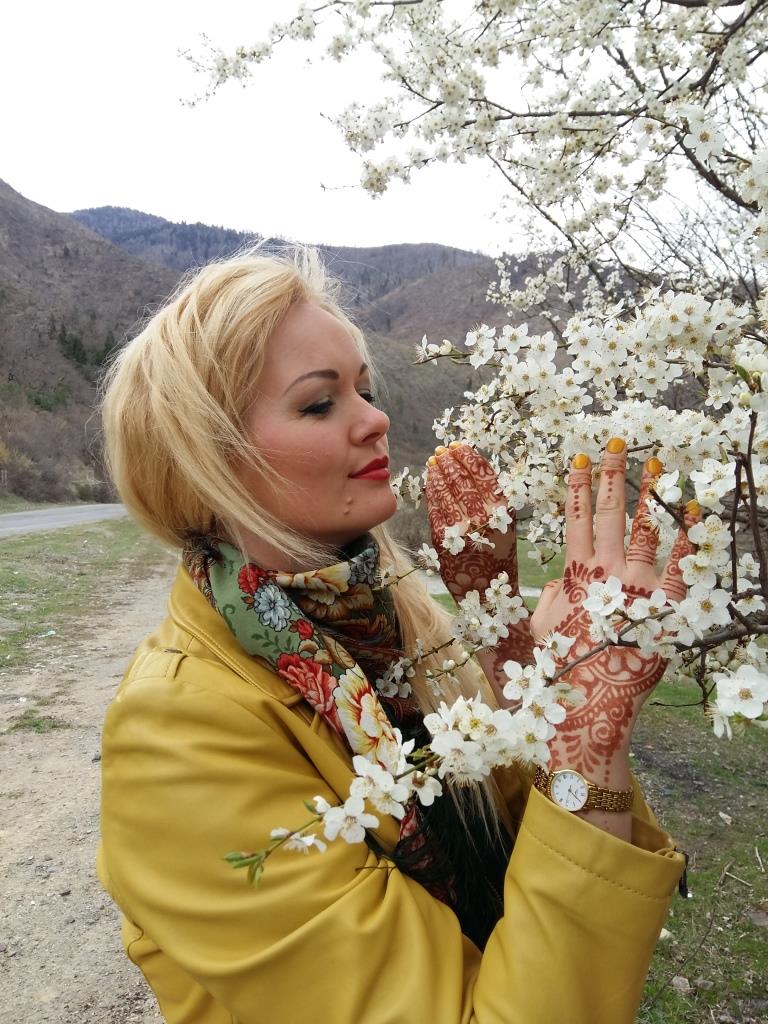
To hear the voice of your own intuition, one must be at peace and harmony with oneself; however, this does not mean that this voice can be heard only when everything in life is in the desired order. On the contrary – things falls in the right place only when we are at peace with everything.
We are inclined to judge everything according to our intelligent mind because we are taught that only those things exist for which we can find a logical explanation. Being accustomed to such a way of living, we fail to see how limited is our thinking and approach to life because we are unaware that we can find truth within ourselves. Human’s intuition is just as natural and self-evident as an animal’s instincts. The difference lies in the fact that an animal has no choice and must follow its instincts, while a person always has to choose whether to follow its intelligent mind and logic or its intuition. Rather often the problem comes down to fact that we constantly train our mind and logical reasoning skills while our intuition falls into decay feeling unwanted. Our mind is used more often and, therefore, rules our intuition. The more it edges out intuition, the more distant becomes our chance to once again hear the voice of our intuition. Therefore, it is crucial to find this state of peace and harmony where we can freely disable all logical reasoning skills and listen to ourselves.
The contemplations of one’s mind are surely necessary although they prevent us from seeing the whole picture of what is going on since they are based solely on limited amount of information gained by us at a certain point in our lives as a result of our past experiences; intuition, on the other hand, knows no such limitations. The full mightiness of intuition lies within our depths while it is triggered, most often, by an external factor. Intuition is not a process of some kind since it is able to simply move from a problem to a conclusion. We are capable of being open enough in order to hear the voice our intuition on daily bases. We can avoid fixating on everyday problems and prevent them from taking over our true nature. We are also capable of finding a time every day for ourselves in order to disable all worthless thoughts and emotions and enrich our consciousness.
Our stereotypes and careless attitude towards situations and things can also cause obstacles on the path to developing our intuition. We have to learn how to understand the same old things anew every time we face them, how not to become predictable or let the routine take over; instead we have to become creative in taking decisions and doing things.
When any kind of issues arise, we have to do everything in our powers to solve the situation by ourselves, and we must teach this truth to our children since the day one. With too much attention and care we oppress each other’s personality and feelings thus moving away from ourselves even more.
Intuition means trust. Children of tender age trust their senses and, therefore, feel okay in unusual conditions, because they do not have a strict plan detailing the sequence of actions; instead, all they have are instincts and senses for guidance. Their actions always are spontaneous, transparent and honest, and the same can be said about intuition!
In Jung’s theory, intuition is one of 4 mental functions. Curtiss and Bates, Jung’s followers, believed that people who trust in their intuition are a part of an avant-garde culture. They strive to be competent and efficient in everything they do while still treating everything just as playfully.
There are plenty of successful people who have admitted that they have taken many business-related decision based on their inner feelings, rather than logical judgments or advices of other people. They have relied on a sudden and mysterious idea instead of a carefully planned scheme.
That shows that the ability to relay on one’s intuition is natural to successful and self-confident people. One must be brave enough to trust the feeling of a moment and possibly even an impulse and to follow the said feeling disregarding the fact that it has no logical explanation.
How cards can lead you to intuition?
The cards can be used as a tool or instrument. They serve as a path that leads to the right answer but cannot be deemed to be the source of it. Answers to all questions hide inside of us and, therefore, problems occur when we try to seek them in external sources thus ignoring ourselves.
The cards are a guide that leads us back to ourselves. The key hides in the fact that this process does not require the presence of our mind. This disables an option of logical answers to questions we ask ourselves, leading us directly to intuition.
Subconsciously, we perceive every little detail of a situation, allowing our brain to process and analyse this information, which CAN lead to intuition and hunch, although we rarely pay it any attention. The purpose of the cards is to record one’s subconscious for determining which actions could show the most success in a certain situation.
Why I created Intuition Cards?
There is abundance of events, decisions, possible solutions, questions and complications in every person’s life. Each step takes us to a new situation with unprecedented tasks and possibilities. The problem of our age is that rather often we are merely consequences of something that has happened but not the cause thereof; therefore, often we do not see a solution for our problems and situations that tend to repeat themselves.
We wish tend to believe that our actions are justified and decisions correct, but life then reveals that we have made mistakes and returned to the starting point of our problems once again. Sometimes it might even seem that life, instead of going forward, creates problems and obstacles in our way so that we couldn’t be happy and fulfilled.
I consult people daily on Vedic astrology and, through reading their maps, I shed light on situations and conditions which tend to create events in their life. That allows these individuals to realize subtle nuances and to take conscious actions. Through learning about themselves people quite literally gain tools for managing their everyday experiences and life itself. However, it is not feasible to ask a Vedic astrologist for an advice every day, and it should not be like that. People must trust their inner core, their inner power or God. That empowers to believe in yourself, to rely on yourself, and not to make mistakes. Because when people bet on themselves, it never leads to a disappointment.
The Intuition Cards are a perfect solution. These cards are an ideal tool that allows you to find answers to all questions in life in line with your own true nature. By picking a solution that suits the person the best, the future unfolds according to a smooth path and reveals solutions by giving a key to a lifetime of wellbeing, happiness, harmony and consciousness.
How these cards were designed?
The card design must be truly efficient since their purpose is colourful and convincing representation of each Nakshatra’s answer which is the main tool for understanding the answer to the question asked. There is more than one symbol in each Nakshatra’s symbolic depiction and, therefore, there are several choices possible. To feel the connection with each Nakshatra, I studied extensively their history, myths, legends, areas of operation of their dominant deities, their character and activities. As a result, all of this information revealed which of these symbols has the most descriptive power.
Although Nakshatras might seem unreal, figurative, complex and strange, they curate a certain sphere and area of life for each and every one of us, because the layout of planets in one’s horoscope should be assessed not only by taking into account the nine planets. Each planet, at a certain degree, materializes through the nature of a certain Nakshatra. That means that while one person is joyful, another might be sad. This is how conflicting and different can be the nature of emotions. Individually, this largely depends on the characteristics of Nakshatras.
The process of drawing card design required constant presence regardless of my whereabouts at the time. The tool set of pencils, paper sheets and ideas travelled with me at all times because I had to use every moment of inspiration for drawing and creation. 27 cards – a lot of symbols, myths and nuances. I drew cards at my office in Riga, as well as at my home office in Jurmala. Sometimes I moved to kitchen when I felt that inspiration might find me better there. When I went to my mother’s place in Sigulda, I continued to draw, feeding from the energy and inspiration given by the power of my childhood home. When I went with my family on a cycling trip to Italy, the bag of markers and pencils was much larger than one I would have taken just for the kids. I managed to draw in Alps while sitting in a swimsuit and sunbathing, enjoying the view of snowy mountaintops. A beautiful environment gives you ideas and inspiration as well as energy and opportunities to express yourself. I very much enjoyed the fact that such a drawing task successfully found its place in my everyday life. These cards came into existence as a part of my life and, therefore, cannot be separated from my very essence. With the idea for every card I expressed what kind of role and meaning the symbol’s power has for seeking the right solution.
The common design element (various colourful fields) clearly interprets the essence of one’s intuition. Intuition is a channel through which energy flows with different power and capacity. We all can dip into this channel of energy or make it broader, provided that we are able, willing and knowing how to do it. I had this idea of depicting intuition a while before I started to draw the cards. I felt it around the time when my kids were ill and I spend several days treating them. My days back then were calm and emotionally saturated because restoring children’s health takes extra strength from parents. To heal my children, I had to become stronger myself. I took few blunt pencils while sitting bedside and started to draw freely fields of different sizes on a piece of paper. Soon after that the page was completely structured and I felt a need to colour these fields in bright and vivid colours. I mixed tones and sought contrasts, I was so passionate that my kids became eager to learn such drawing techniques. I thought them how to do it and we coloured together. The identified strength of intuition allowed us to experience new energy reserves. That healed how I felt and restored my children’s health. The process of drawing is just like self-realization which sometimes allows not only to express yourself but also to find key areas which give you strength and awareness to reach new mountaintops.
This is how these Intuition Cards became an instrument for seeking answers to all questions in life. These cards are a tool or instrument. They give you a unique chance to find answers to all important questions in life based on your own internal strength (intuition). Moreover, sometimes the question answers itself. Therefore, the more we develop our subtle senses, the more aware is our way of living and more definite are our choices.
Inese Davidsone,
Ph.D.oec.cand., Vedic astrologist




























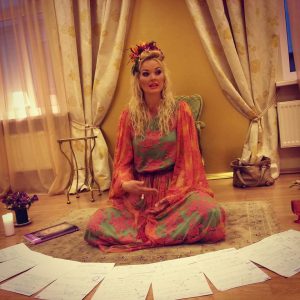


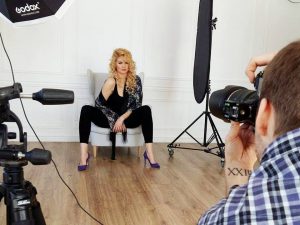
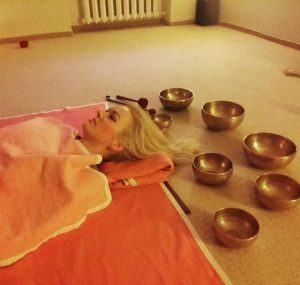

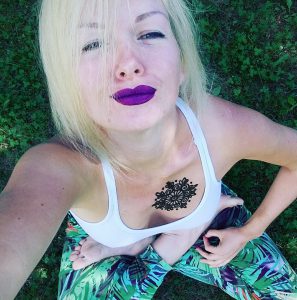
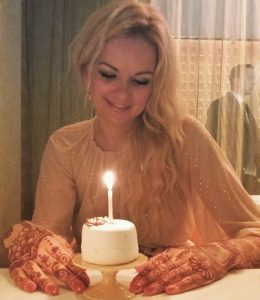
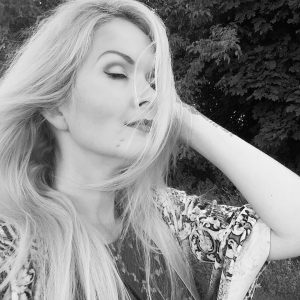


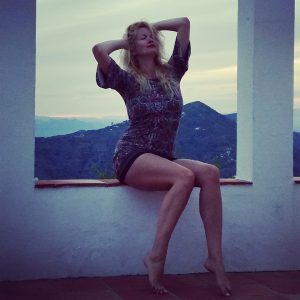

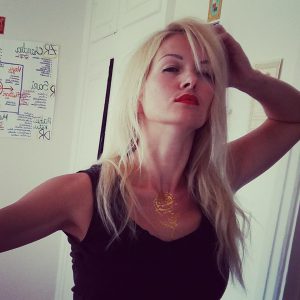

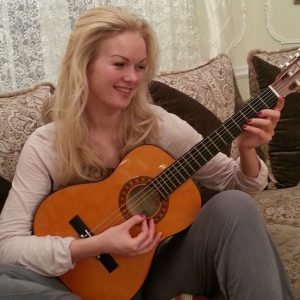
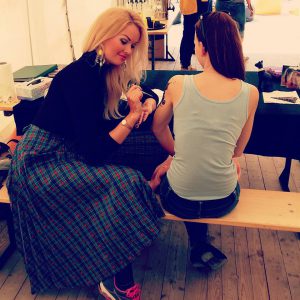
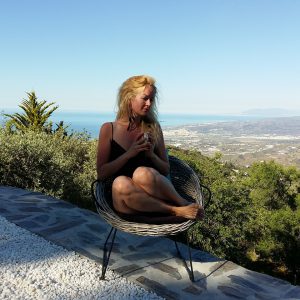
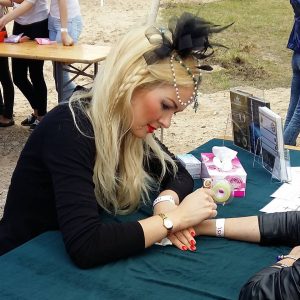

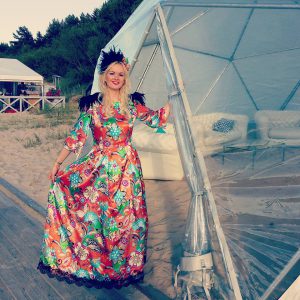


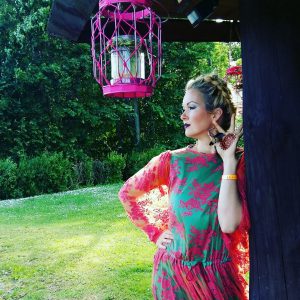

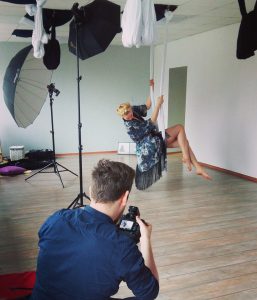


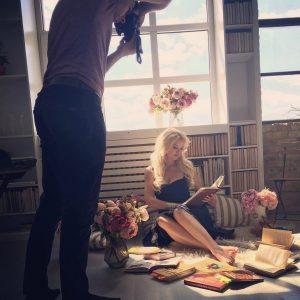
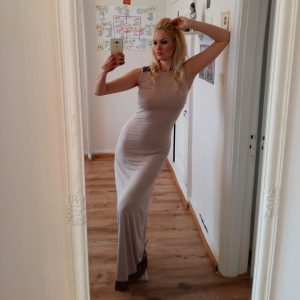




Inese Davidsone